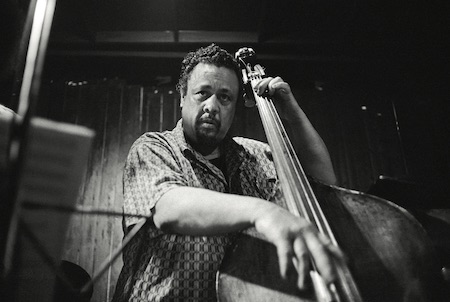Oct 28, 2025 10:47 AM
In Memoriam: Jack DeJohnette, 1942–2025
Jack DeJohnette, a bold and resourceful drummer and NEA Jazz Master who forged a unique vocabulary on the kit over his…

The results of Epitaph are alternately lyrical, cacophonous, raucous and elegiac.
(Photo: Jan Persson)Any consideration of Charles Mingus’ corpus must contend with Epitaph, his magnum opus, a monster orchestral work that is, like the man himself, ambitious, sprawling, ungainly, virtuosic, overstuffed, angry, passionate and restless. Consisting of 19 movements, it was written for an orchestra of 31 — in effect a double big band, augmented by bassoon, oboe, tuba, timpani, electric guitar and vibes.
The score, which exceeds 500 pages, was written over a 20-year period. It takes more than two hours to perform, and was painstakingly pieced together after his death in 1979 by musicologist Andrew Homzy, who found it in the home of Sue Mingus, Mingus’ wife. She had asked Homzy to catalogue the Mingus papers, now residing in the Library of Congress.
Ultimately unclassifiable, it can be construed as a postmodern take on traditional and modern jazz as well as European classical forms and conventions. It includes a few of his best-known works, “Better Get It In Your Soul,” “Peggy’s Blue Skylight,” and “Freedom,” throwbacks to early jazz (Jelly Roll Morton’s “Wolverine Blues”) and nods to Duke Ellington and Thleonious Monk. The work constantly confounds expectations; any time it threatens to go somewhere conventionally, it reaches for the unexpected. The results are alternately lyrical, cacophonous, raucous and elegiac.
Epitaph rose like a phoenix — eventually — from the ruins of what Mingus considered his biggest failure: his disastrous 1962 concert at New York’s Town Hall. The huge orchestra — which included Snooky Young and Clark Terry on trumpets and Eric Dolphy, Charles McPherson and Zoot Sims on saxophones, among many other greats — had been assembled but never properly rehearsed. Copyists were still madly scribbling parts even as the concert was underway. There was even disagreement between the promoters (including George Wein) and Mingus about how to describe the event: Mingus wanted a public recording session, but advertising called it a concert. At one point, according to multiple accounts, Mingus grabbed the mic and exhorted the audience to ask for its money back.
The work was later championed by Gunther Schuller, who conducted the first complete concert version at Lincoln Center in 1989 with a band that included Wynton Marsalis, Snooky Young and Randy Brecker on trumpets, and George Adams and John Handy on saxophones. Sony/Columbia released the recording as a double album the following year. Schuller oversaw another version in 2007, which played in New York, Chicago, Cleveland and Los Angeles with Christian McBride on bass.
Musicians who have performed it testify to its difficulty. Marsalis is said to have once pointed at a passage in the score, saying, “That looks like something you would find in an etude book ... under ‘hard.’”
As you might expect, the bass is often front and center. McBride, recalling the experience, said, “I didn’t get too hung up on the technical difficulty. Any passage I had problems with — well, you just have to practice harder. [But] my sense was that he didn’t want it perfect.” DB

Jack DeJohnette boasted a musical resume that was as long as it was fearsome.
Oct 28, 2025 10:47 AM
Jack DeJohnette, a bold and resourceful drummer and NEA Jazz Master who forged a unique vocabulary on the kit over his…

D’Angelo achieved commercial and critical success experimenting with a fusion of jazz, funk, soul, R&B and hip-hop.
Oct 14, 2025 1:47 PM
D’Angelo, a Grammy-winning R&B and neo-soul singer, guitarist and pianist who exerted a profound influence on 21st…

Kandace Springs channeled Shirley Horn’s deliberate phrasing and sublime self-accompaniment during her set at this year’s Pittsburgh International Jazz Festival.
Sep 30, 2025 12:28 PM
Janis Burley, the Pittsburgh International Jazz Festival’s founder and artistic director, did not, as might be…

Jim McNeely’s singular body of work had a profound and lasting influence on many of today’s top jazz composers in the U.S. and in Europe.
Oct 7, 2025 3:40 PM
Pianist Jim McNeely, one of the most distinguished large ensemble jazz composers of his generation, died Sept. 26 at…

Drummond was cherished by generations of mainstream jazz listeners and bandleaders for his authoritative tonal presence, a defining quality of his style most apparent when he played his instrument unamplified.
Nov 4, 2025 11:39 AM
Ray Drummond, a first-call bassist who appeared on hundreds of albums as a sideman for some of the top names in jazz…